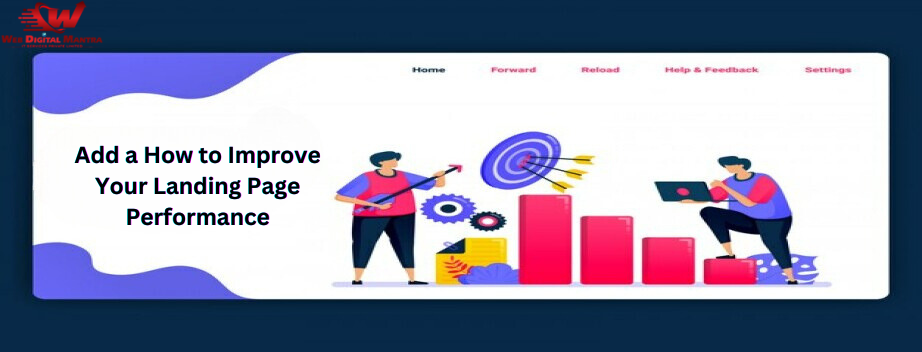
In the competitive world of online marketing, the effectiveness of your Landing Page can make or break your conversion rates. A landing page serves as a focused entry point for potential customers, designed specifically to drive a particular action—be it signing up for a newsletter, making a purchase, or downloading a resource. Understanding how to create high-performing landing pages is crucial for any business looking to maximize its online presence.
In this article, we’ll explore proven tips for enhancing Landing Page Performance, highlight essential elements that contribute to conversions, and clarify the differences between landing pages and homepages. Whether you’re a seasoned marketer or just starting your journey, these insights will help you optimize your landing pages and boost your overall marketing strategy.
Why Headlines Matter
The headline is the first thing visitors see when they land on your page, and it sets the tone for everything that follows. A confusing or vague headline can immediately turn people away, while a clear and compelling one will draw them in.
Best Practices for Crafting Headlines
Make sure your headline is both clear and concise. It should clearly state the value or benefit of what you're offering. Use action-oriented language and avoid jargon or overly complicated terms.
What Makes a CTA Compelling
Your call to action is the key to getting conversions. A weak or unclear CTA can result in missed opportunities. A strong CTA is clear, action-oriented, and creates a sense of urgency.
Examples of High-Converting CTAs
The Impact of Design on Conversions
A cluttered or overly complex design can overwhelm visitors and hurt your conversion rates. The Best Landing Pages are simple, clean, and easy to navigate.
Best Design Practices for Landing Pages
Focus on a minimalistic design with plenty of white space, and only include essential elements. Make sure the CTA stands out and that there is a clear visual hierarchy.
Why Mobile Optimization is Critical
More than half of all web traffic comes from mobile devices. If your landing page isn't optimized for mobile, you're missing out on a large portion of potential conversions.
Strategies to Improve Mobile Experience
Ensure your landing page is responsive and easy to navigate on smaller screens. Use large, tappable buttons, and keep forms short to prevent frustration.
How Slow Loading Pages Hurt Performance
A slow-loading page can frustrate users and increase your bounce rate. In fact, studies show that even a one-second delay can result in a 7% reduction in conversions.
Tools to Measure and Improve Speed
Use tools like Google PageSpeed Insights or GTmetrix to identify speed issues. Compress images, minimize code, and consider using a content delivery network (CDN) to speed things up.
Importance of Visuals in Engagement
People process visuals faster than text, and high-quality images or videos can help keep visitors engaged. However, be careful not to slow down your page with large media files.
How to Optimize Images and Videos for Speed and Quality
Use compressed image formats like WebP, and ensure that videos are optimized for fast loading. Avoid autoplaying videos, as they can annoy users and increase bounce rates.
Understanding Your Audience’s Needs
Your content should be tailored to your audience's needs and pain points. Focus on providing value and addressing any concerns they may have about your product or service.
Tailoring Content to Drive Conversions
Use clear, benefit-driven copy that speaks directly to your audience. Avoid generic language and focus on how your offer will solve their specific problems.
What to Test on Your Landing Page
A/B testing allows you to experiment with different versions of your Landing Page to see what works best. Test elements like headlines, CTAs, images, and layouts to find the highest-converting combinations.
Best Practices for Running A/B Tests
Run one test at a time to avoid confusion. Keep track of your results and make data-driven decisions based on what works.
Why Social Proof Boosts Trust
Social proof, such as customer testimonials or case studies, can build trust and credibility. When visitors see that others have had positive experiences with your product or service, they are more likely to convert.
How to Effectively Incorporate Testimonials
Place testimonials near your CTA or throughout your page to reinforce trust. Use real customer quotes and, if possible, include photos or names for added authenticity.
The Dangers of Too Many Elements on a Page
Having too many distractions on your landing page can lead to confusion and prevent visitors from converting. Each additional link, image, or pop-up can take attention away from your main CTA.
How to Simplify for Maximum Focus
Limit the number of clickable elements on your page and remove any unnecessary distractions. Keep your design simple, and make sure your CTA is the most prominent feature.
Creating a high-converting landing page requires more than just a visually appealing design. Here are five essential elements every landing page should include:
A common misconception is that landing pages and homepages serve the same purpose. However, they are distinct, with different goals and design approaches. Here are the key differences:
In today’s digital landscape, Optimizing Your Landing Pages is essential for driving conversions and maximizing the effectiveness of your online marketing efforts. By implementing the proven tips outlined in this article, incorporating must-have elements, and understanding the differences between landing pages and homepages, you can create a more engaging and effective user experience. Remember that continuous testing and analysis are key to refining your approach and achieving lasting results. Whether you’re a seasoned marketer or just starting, prioritizing your landing page strategy will ultimately lead to greater success and increased revenue for your business.
1. What is a landing page and why is it important?
A landing page is a standalone web page designed to encourage visitors to take a specific action, such as filling out a form, signing up for a service, or making a purchase. It's important because a well-designed landing page can increase conversions, drive targeted traffic, and enhance the user experience by focusing on a single goal.
2. What is the difference between a landing page and a homepage?
The key difference between a landing page and a homepage is their purpose. A landing page is designed for a specific campaign or goal, such as lead generation or sales, with minimal distractions. In contrast, a homepage offers a broader overview of the website, featuring multiple sections and links to guide visitors to different areas.
3. How do I improve my landing page conversion rate?
To improve your landing page conversion rate, focus on these key elements:
Create a clear and compelling
headline.
Use engaging visuals and relevant
content.
Add a strong, action-oriented
call to action (CTA).
Simplify the lead capture form.
Use social proof like testimonials or reviews to build trust.
4. Why is mobile optimization important for landing pages?
Mobile optimization is crucial for landing pages because a large portion of web traffic comes from mobile devices. A mobile-optimized landing page ensures a seamless user experience, faster load times, and improved conversion rates, especially for users accessing the page via smartphones or tablets.
5. What is A/B testing and how does it improve landing page performance?
A/B testing involves creating two versions of a landing page and testing them with different segments of your audience. By comparing performance metrics like click-through rates, conversion rates, and user engagement, you can identify which version performs better and make data-driven improvements to boost overall landing page performance.
 Jaganath Das
Jaganath Das

The guide on improving landing page performance to be super helpful It offers clear tips on optimizing design, content, and load speed, making it easier to increase conversions

I read the tips on improving landing page performance and found them very useful! The advice on clear calls-to-action and fast loading times really helped me enhance my page's effectiveness.

To boost landing page performance, make sure it loads quickly and has a clear, simple design. Focus on strong, easy-to-understand calls-to-action for better conversions.
Copyright @2020. All Rights Reserved by WEB DIGITAL MANTRA IT SERVICES PVT LTD
Post Reviews